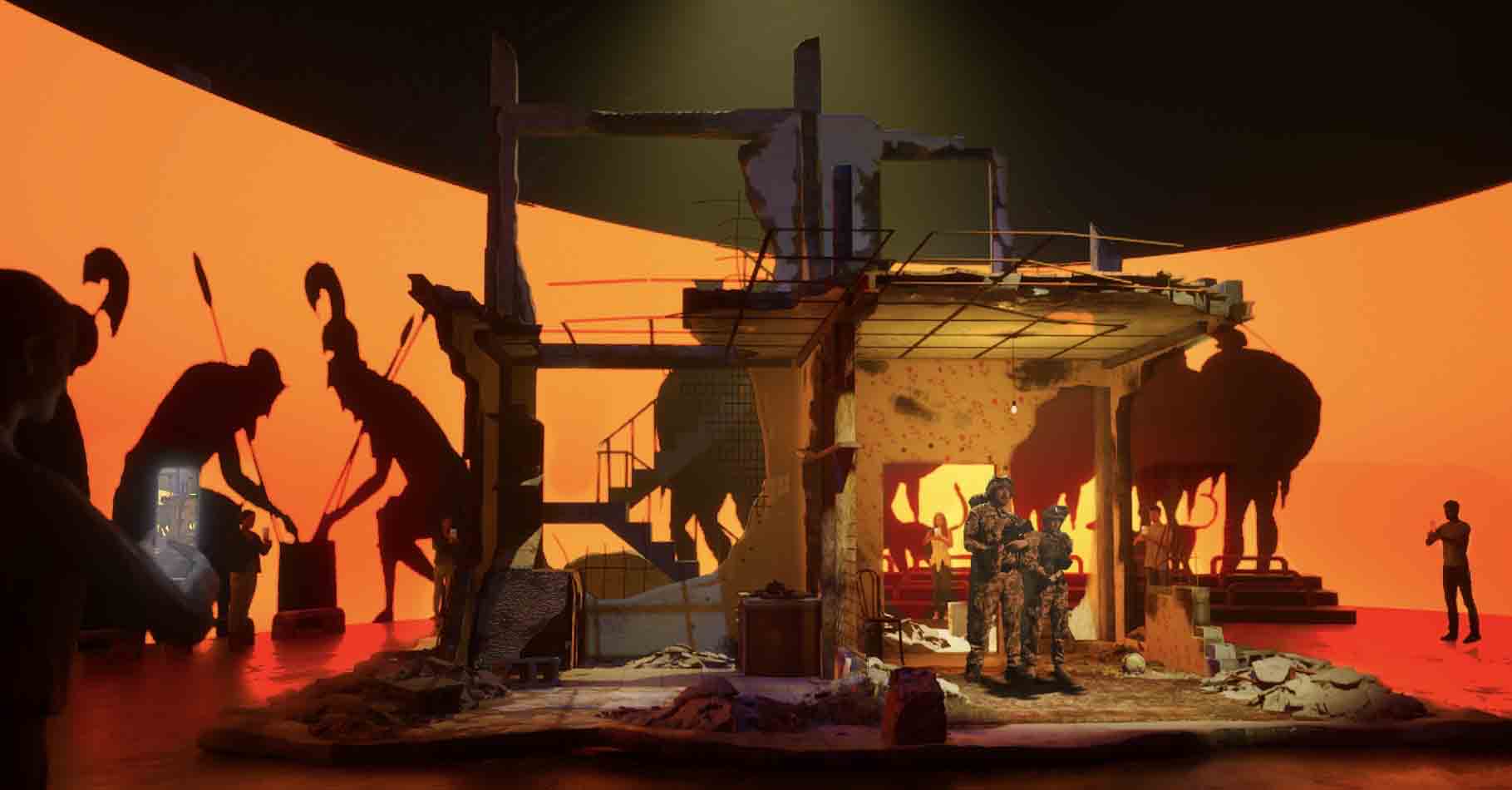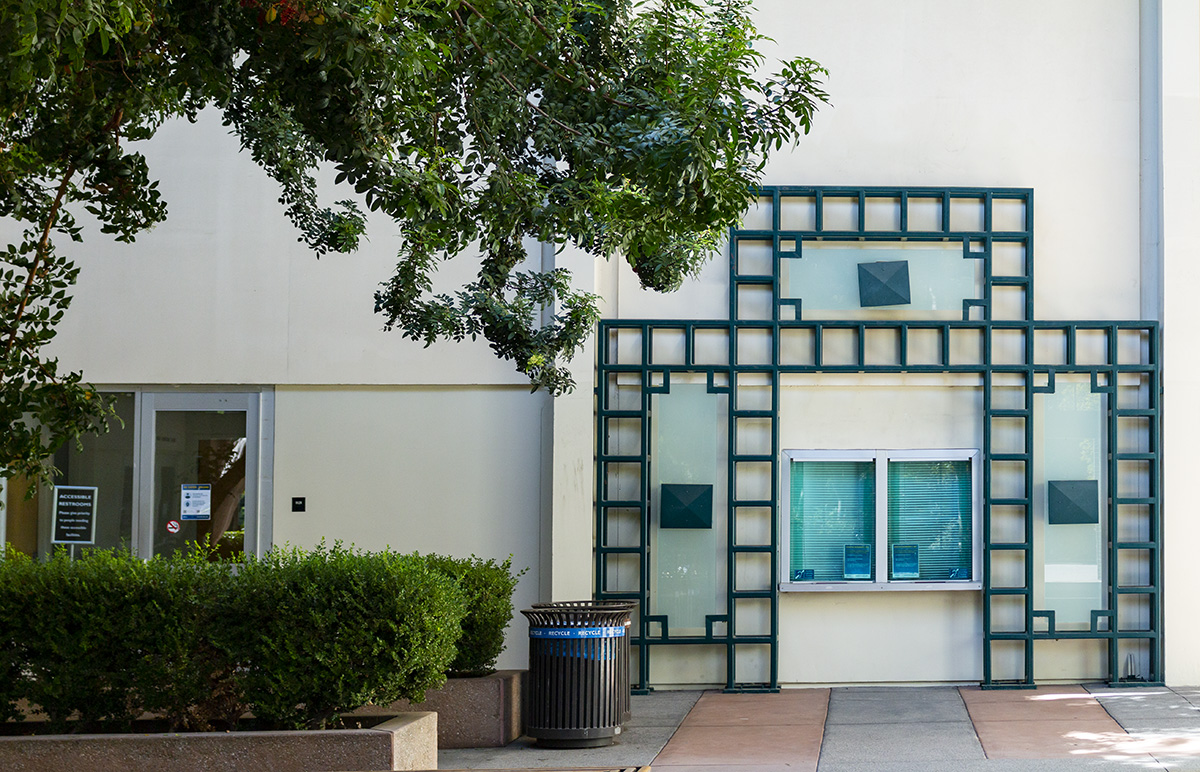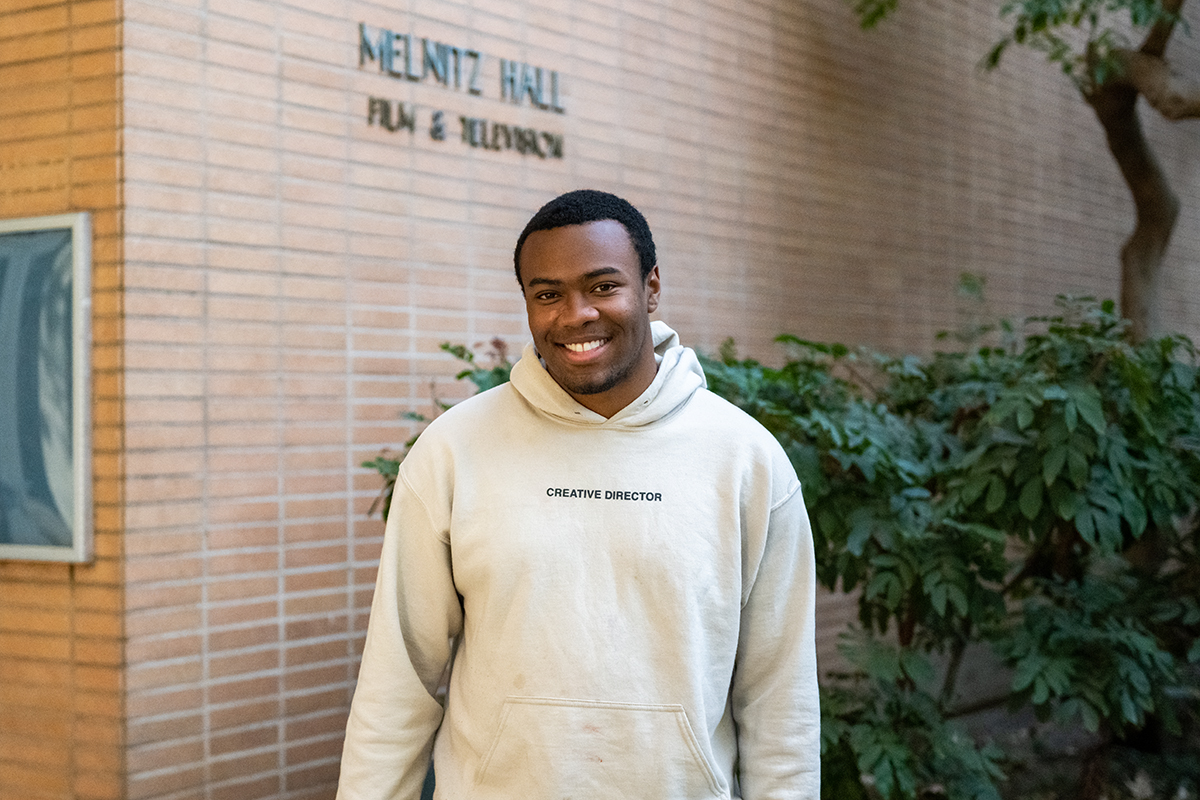UCLA student expands reality in MFA thesis through AR technology

A rendered image from Benedict Conran’s thesis project shows audiences interacting with the set of a play on their phones. The third-year lighting design MFA student merged the play “Ajax in Iraq” with AR technology to create an immersive theater experience, he said. (Courtesy of Benedict Conran)
By Katy Nicholas
June 11, 2023 8:03 p.m.
This post was updated June 11 at 8:44 p.m.
The lines between fantasy and real life blur in Benedict Conran’s theater design thesis.
The third-year lighting design MFA student took Ellen McLaughlin’s play “Ajax in Iraq” and merged it with augmented reality technology to create an interactive and symbolic performance about an American soldier fighting in Iraq in the 2000s. Conran said his thesis involves performances from both live actors on the stage, as well as simulated characters that viewers interact with on their phones, which AR technology allows by inserting visuals into the real world around the user.
“My interest in design and theater is in mixed reality. Using new tools at our disposal to create immersive experiences that give audiences a sense of agency, a sense of exploration and the ability to control how they interact with the narrative,” Conran said.
[Related: Graduate student Doyeon Kim conveys theme of identity through 3D simulations]
Conran said the play grapples with the protagonist’s internal clashes about whether fighting in the war is morally correct, as well as what happens when these mental struggles confuse one’s concept of reality. By including both real characters on stage and augmented characters on audiences’ phones, it creates a metaphorical fight for the parameters of reality that mirrors the main character’s challenge, he said.
“I think the interplay between what you can see and not see is a really beautiful metaphor for how to interact with what’s going on in someone’s head,” Conran said. “In this time, the way that we interact with a lot of global news and global conflict and trauma is through our phones and our devices, so it seemed like a very natural fitting for it to be seen through that kind of a pitch.”
Alumnus and guest director Mira Winick said the characters in the augmented segments represent the ghosts of the past talking to the characters of the present. She said the use of AR changes the depth of storytelling of the play, and since Conran specializes in lighting design, the illumination follows the main character’s trauma in an impressionistic manner. For example, she said the lights change color with their moods, such as by flashing when they experience PTSD episodes.
Beyond the lighting, the performance itself deals with two overarching themes: how society approaches and treats veterans, as well as how the public consumes sensitive content, Winick said. She said wars and conflicts can be treated as entertainment to unaffected populations. Conran said that adding AR aspects changes audience members’ perceptions of a topic in ways that wouldn’t be achievable by just watching in a seat, such as moments when viewers would have to react to the virtual characters’ confrontation.
This level of interaction has not always been possible, Winick said, as AR is a relatively new technology in the entertainment industry. Second-year theater student and actor Nicholas Sitilides, said that AR fills a hole that currently exists in entertainment. His generation is so used to split screening, he said, scrolling on their phones as they watch TV, but he said AR is future oriented and can hold the attention of present-day audiences. Winick said this is a modern way to stretch the attention span of younger viewers.
“Your brain’s trying to grasp it, but it’s so trained to either (think) it’s only in the phone or it’s in real life but the fact that it is both, is this very compelling way of viewing something,” Winick said.
[Related: Q&A: Tony-nominated UCLA professor talks lighting design for ‘Camelot’, industry values]
Conran said the use of AR is also captivating because it allows the audience to frame their own angle of the story depending on what they want to see, as the seatless setup provides unique interaction. The AR characters talk directly to the audience members at different times, which builds on another level of interaction with the content, he said.
Although there are many types of emerging technology, AR differs from virtual reality as it does not change the current reality, Conran said, but expands it. He said reframing how and what the audience sees and adding elements is a unique feature that this technology brings to theater. The live characters and physical sets also ultimately break expectations of regular technology-based performances, he said.
“I think we hear a lot about how AR and VR can change the world and I think that’s all well and good,” Conran said. “I think it gives us another really interesting way of experiencing live performance and I think it’s honestly a really useful tool for bringing people together as much as it is for creating escapism.”




